Exhibitions 2008
Robert Lebeck: Photographs 1955–2005
28 November 2008 to 23 March 2009
The Martin-Gropius-Bau devoted the major exhibition Photographs 1955–2005 to the work of the German photo reporter Robert Lebeck, who photographed for Revue, Kristall and Stern and was editor-in-chief of GEO magazine. He achieved fame with his feature Africa in the Year Zero (1960). The photo of a young African snatching King Baudouin’s sword during the Congo’s independence celebrations went round the world and still ranks as his “calling card” today.
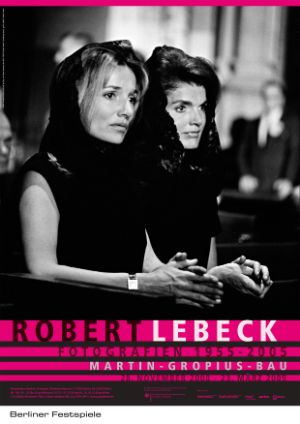
Poster of the exhibition “Robert Lebeck”
Design: photo_grafik_atelier Cordula Lebeck
Zeitblick (Time Perspective). Acquisitions of the Federal Republic of Germany’s Contemporary Art Collection, 1998–2008
30 October 2008 to 12 January 2009
To mark the tenth anniversary of the Federal Government Commissioner for Culture and the Media the exhibition Zeitblick (Time Perspective) presented a selection of 50 of the almost 400 works purchased in the last ten years for the Federal Republic of Germany’s Contemporary Art Collection. With only one exception the works shown had have never been exhibited in any of the previous exhibitions of this collection.
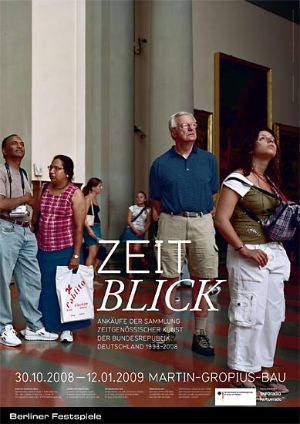
Poster of the exhibition “Time Perspectives”
Design: Maren von Stockhausen, Berlin
Richard Avedon: Photographs 1946–2004. A Retrospective
19 October 2008 to 19 January 2009
The retrospective Richard Avedon: Photographs 1946–2004 featured more than 250 photographs, demonstrating the scope of Avedon’s production, from the glamorous world of fashion through the more psychological portraits to reportage-oriented shots. The first photograph in the exhibition was taken in 1946, when Avedon went to Rome and Sicily just after World War II, and the last photograph in the exhibition is of the singer Björk, taken less than four months before Avedon’s sudden death.
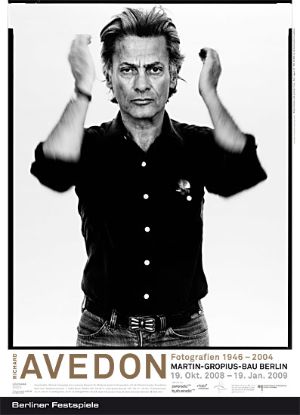
Poster of the exhibition “Richard Avedon”
Design: Steenbrink Vormgeving, Berlin
The Tropics – Views from the Middle of the Globe
12 September 2008 to 5 January 2009
Twenty years after the trailblazing show Les Magiciens de la Terre in Paris, the Tropics exhibition in the Martin-Gropius-Bau once again attempted to explore in troubled times the currents of energy and subtle discords between the hemispheres, to show which cultural forces are working in harmony and which in opposition to one another. The exhibition aimed to create an incorruptible, crisis-resistant stock of images that permits a non-hierarchical view of the world.
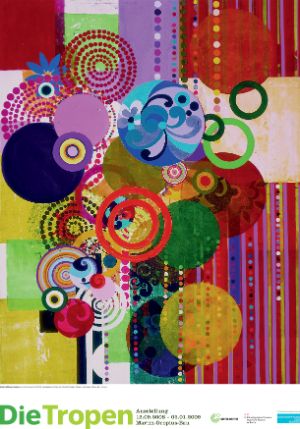
Poster of the exhibition “The Tropics”
The Collections of Barbara Bloom
22 August to 9 November 2008
As suggested by the title The Collections of Barbara Bloom, this exhibition is comprised of – and is a meditation on – collections. It is a hybrid form: a combination of a self curated mid-career retrospective, estate sale, and self-portrait. Bloom has built her career out of questioning appearances and exploring the desire for possessions. Here she challenges conventional perceptions with wry commentaries on the shifting notions of value, the practice of collecting, and the norms of the retrospective.
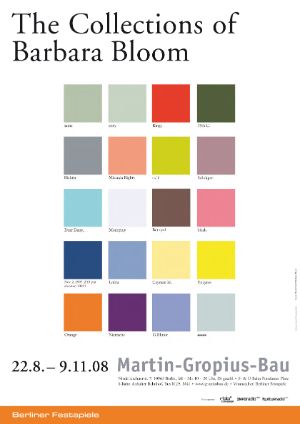
Poster of the exhibition “The Collections of Barbara Bloom”
Design: Steenbrink Vormgeving, Berlin
Painting for Eternity – The Tombs of Paestum
27 June to 28 September 2008
With its three large Doric temples, Paestum became a well-known site early on thanks to engravings by Piranesi (1777/78) and Goethe’s impressive descriptions in his Italienische Reise (1787). However, many people are unaware that Paestum contains one of the greatest treasure troves of ancient fresco paintings: During excavations in the 1960s, around 200 richly painted tombs from the Lucanian period (4th century B.C.) were discovered. The Martin-Gropius-Bau dedicated an exhibition to these rare examples of ancient tomb art. Around 45 painted tomb slabs of the Museo Archeologico Nazionale di Paestum were shown at the exhibition in Berlin, including seven complete tombs.
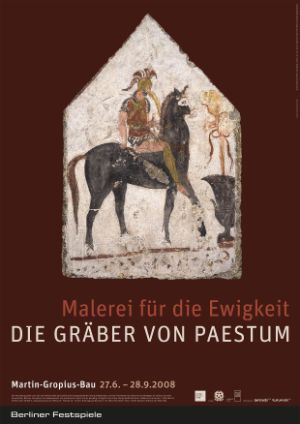
Poster of the exhibition “Painting for Eternity. The Tombs of Paestum”
Design: Steenbrink Vormgeving, Berlin
Man Ray: Unconcerned But Not Indifferent
13 June to 18 August 2008
Man Ray: Unconcerned But Not Indifferent comprised drawings, photos, paintings and sculptures from the Man Ray Trust collection in Long Island, New York. The Man Ray Trust collection has never gone on show before. In juxtaposing Man Ray’s artistic works, tools, documents, objects and pictures which gave the artist his inspiration, the exhibition created a distinctive setting allowing visitors to experience and enjoy his wide-ranging artistic work.
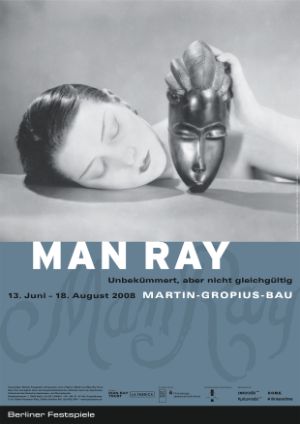
Poster of the exhibition “Man Ray: Unconcerned But Not Indifferent”
Design: Steenbrink Vormgeving, Berlin
Alexander Rodchenko
12 June to 18 August 2008
The exhibition on Alexander Rodchenko in the Martin-Gropius-Bau showed the many facets of his innovative photographic work: the beginning of photomontage, the portraits of his friends and family, partially as multiple angles, the experiments with perspectives, picture structures, effects of light and shadows, the reports with the montage of text and pictures and also the series on the circus and the last experiments with colour photography. For the first time it was possible to view works from the estate managed by the heirs.
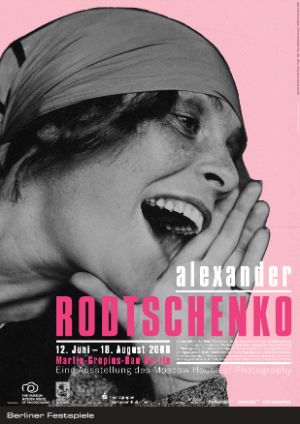
Poster of the exhibition “Alexander Rodchenko”
Design: Steenbrink Vormgeving, Berlin
good prospects – young german photographers 2007/2008
17 May to 14 July 2008
good prospects – young german photographers 2007/2008, a project to promote talented young photographers, was launched on the initiative of Josefine Raab and Stefan Becht in 2004. The project centres on an annual competition for final assignments submitted by students from all the universities, universities of applied sciences and academies in Germany offering courses in photography. Each university can enter a maximum of five entrants for the competition.
Yevgeny Khaldei: The Decisive Moment. A Retrospective
9 May to 28 July 2008
The Decisive Moment, the first major retrospective devoted to the Russian photographer Yevgeny Khaldei, was shown in the Martin-Gropius-Bau in Berlin. Khaldei, the Russian Robert Capa, provided extensive photographic coverage of the Second World War, the war between Germany and the Soviet Union. Some of his images are world-famous and have become icons in the history of photography. Khaldei is known primarily for his spectacular documentary photos of the Second World War and the staged hoisting of the red flag of the Soviet Union on the top of the Reichstag building in Berlin in 1945, but also for the photos he took at the Potsdam Conference and during the Nuremberg Trials. In addition to these historic images the retrospective showed hitherto unpublished pictures taken by Khaldei as well as photos dating from the 1930s up to the end of his career in the 1980s.
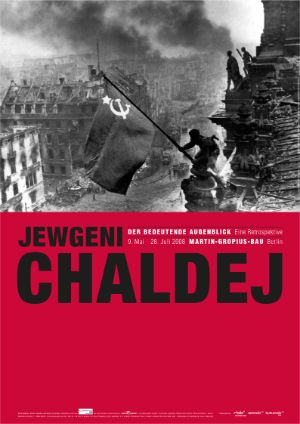
Poster of the exhibition “Yevgeny Khaldei – The Decisive Moment.”
Design: Steenbrink Vormgeving, Berlin
Dani Karavan: Retrospective
14 March to 1 June 2008
For the first time a major retrospective was devoted to the Israeli artist Dani Karavan in Germany. The exhibition was housed in the Martin-Gropius-Bau and mounted in cooperation with the Nationalgalerie – Staatliche Museen zu Berlin. Previously it was to be seen at the Tel Aviv Museum of Art. The Association of Friends of the Nationalgalerie had given the exhibition generous backing, while the project would not have been possible without the support of the capital’s Cultural Fund. The exhibition was a contribution to Israel’s 60th birthday.
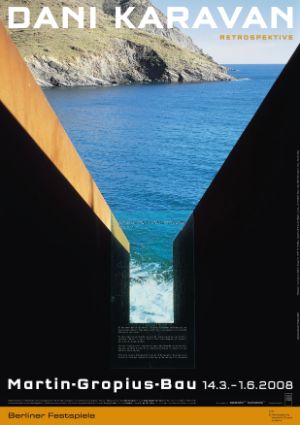
Poster of the exhibition “Dani Karavan”
Design: Steenbrink Vormgeving, Berlin
Power and Friendship. Berlin – Saint Petersburg 1800–1860
13 March to 26 May 2008
Power and Friendship. Berlin – St. Petersburg 1800–1860, shown in the Martin-Gropius-Bau in Berlin, was a long-term project of the Stiftung Preußische Schlösser und Gärten Berlin-Brandenburg in collaboration with partners such as the State Hermitage Museum St. Petersburg and the Peterhof State Museum-Reserve as well as five further lenders in Russia and numerous national and international lenders. Moscow had repeatedly been the subject of attention, and the view turned to the city known since its foundation in 1703 as the “window to Europe”, capital of the Russian Empire from 1712 to 1917.
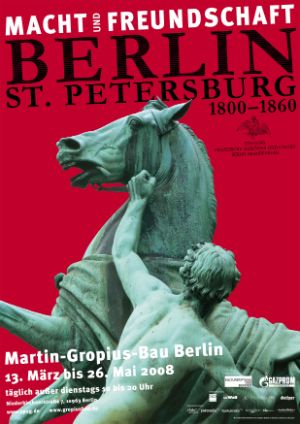
Poster of the exhibition “Power and Friendship. Berlin–Saint Petersburg 1800–1860”
Design: Waldemar Strempler, SPSG
Karl Valentin: Pioneer of Films and Artisan of Media
25 January to 21 April 2008
For the first time, an exhibition dedicated to the Bavarian comedian, cabaret artist, author and film producer Karl Valentin was shown in Berlin at the Martin-Gropius-Bau. The exhibition deliberately moved away from a biographical approach to Valentin. The focus was on the complex media-related aspects of his work. Karl Valentin's grotesque world of stage, film and language, his experimental, comical play with media effects was illustrated with over 300 exhibits. On display were photographs, original manuscripts, typescripts, letters, drawings, posters, photographs, records and films.

Poster of the exhibition “Karl Valentin”
Design: Steenbrink Vormgeving, Berlin